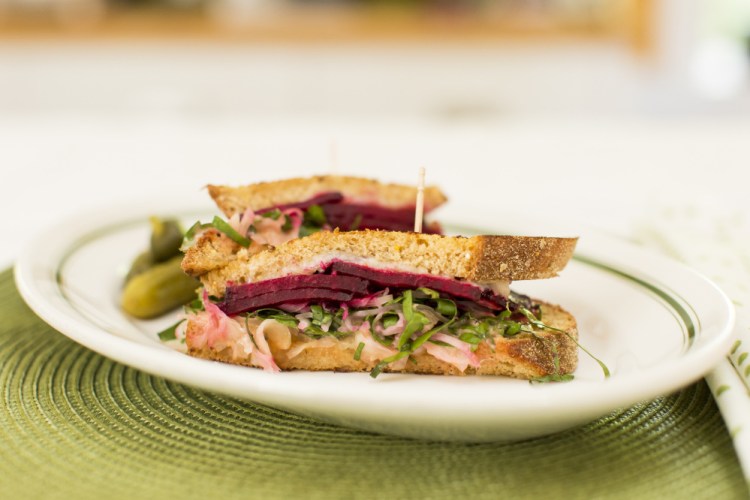Arnold’s Bread, a brand owned by the Pennsylvania-based Bimbo Bakeries USA (yes, really), earlier this month launched its third annual America’s Better Sandwich contest in which chefs and home cooks can submit recipes (using Arnold’s whole wheat breads, of course) that are better for a body than a corned beef reuben. The grand prize is $25,000, and the company is donating a loaf of bread to charity for every recipe submitted.
“Maybe I’d win” was my first thought. Then I tried to recall the last time I’d followed a recipe for any sandwich, let alone a “better” one, which in this case, means “better for me,” or healthier. Don’t you just use less corned beef and a single slice of cheese in that case?
My third thought went to expanding the reach of my “better” sandwich to take sustainable eating into account. The USDA Agricultural Research Service says the average American has one sandwich every other day. That’s not including burgers. If you count those, it’s a one-a-day statistic. So any green addition to your sandwiches will add up over time.
DIY bread from whole grains grown and ground locally cuts the transportation burden and controls waste, as you can make a loaf only when you need it. Yeah, I don’t bake bread either, so buying from a local baker is my next best option. I am not averse to buying commercial breads if ratings systems like Environmental Working Group and GoodGuide.com give them high marks for nutrition, sustainable production practices and social responsibility.
The meat in the middle is a matter of more concern. Store-bought lunch meats typically come from animals raised in feed lots and contain flavor enhancers like monosodium glutamate and preservatives like sodium nitrate. If you can’t forgo the beef, buy a larger than normal rump roast from a local farmer you trust, roast it for Sunday dinner, and slice the leftovers for sandwiches.
The same strategy applies for turkey, but since most of the birds bred for Thanksgiving are still poults at this point, you may need to search harder for a supplier that breeds them for year-round consumption, such as The Turkey Farm and Pine Tree Poultry, both located in New Sharon.
Local cheeses and farm eggs dressed up with everything from spicy Sriracha to tarragon mayonnaise can add more sustainable protein between the slices. But really, your greenest options are vegetables. Lettuce, tomatoes, sprouts, onions and pickles are everywhere on the sandwich scene. And roasted red pepper, grilled portobello mushrooms and smashed avocados come and go like ’70s fashion.
Beyond those, though, I was hard-pressed to conjure up other sandwich-anchoring vegetables, so I went looking in my go-to vegetarian cookbooks.
“The River Cottage Veg Everyday” by Brit Hugh Fearnley-Whittingstall offered up curried egg with lentils and parsley; and mushroom, watercress and blue cheese combinations. In Deborah Madison’s “Vegetable Literacy,” I found a cucumber-lovage sandwich with sweet onion and an open-faced number with spinach, caramelized onion and roasted pepper. Interesting combinations, but no new vegetables involved.
So I arrived back at my no recipe query and started tracking what made vegetarian sandwiches on local menus and across the internet to see what makes them invitingly delicious. There is always something nutritionally slatherable – like a highly flavored hummus – that holds the bits together when you bite into it. The crunchy bit is typically green and sliced ultra-thin. Anything able to yield an umami element – eggplant, beets and mushrooms – has to be cooked. And many of the good ones resemble a reworked version of old favorite, like a BLT with pan-roasted dulse replacing the bacon, grilled cauliflower standing in for the chicken in curried chicken salad, and salt-roasted beets anchoring my beloved reuben.
CHRISTINE BURNS RUDALEVIGE is a food writer, a recipe developer and tester, and a cooking teacher in Brunswick. Contact her at: cburn1227@gmail.com.
Send questions/comments to the editors.




Comments are no longer available on this story